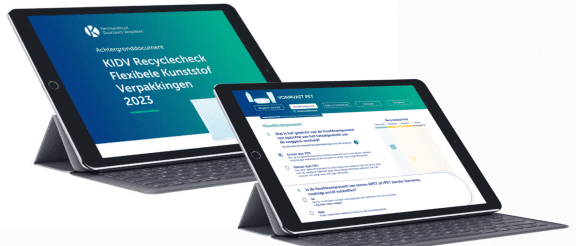KIDV continues as Verpact
November 6, 2025
When necessary, the KIDV Recycle Checks are updated. In August, KIDV published the 2023-version of the Recycle Check for flexible plastic packaging. As of today, this 2023-version is also available in English. Producers and importers can use the Recycle Check relatively easily to test the recyclability of their flexible plastic packaging.
The design and format of the Recycle Check has been renewed. For example, the new format clearly distinguishes between different types of plastic, namely PE, PP and other flexible plastics. For each type of plastic, a separate checklist is available. A background document provides additional information and explanation of the checklist questions.
Users can select the correct answer for each packaging question. The results are processed automatically, and this leads to the rating of the packaging (good, reasonable, limited or non-recyclable). A summary of your data and outcomes can be saved as a pdf and shared with colleagues or other stakeholders. Users can also directly consult the other KIDV Recycle Checks when parts of the packaging consist of paper, glass or metal.
Below are the main changes to the Recycle Check for flexible plastic packaging, compared to the previous version.
Click here to access the KIDV Recycle Check Flexible Plastic Packaging.
